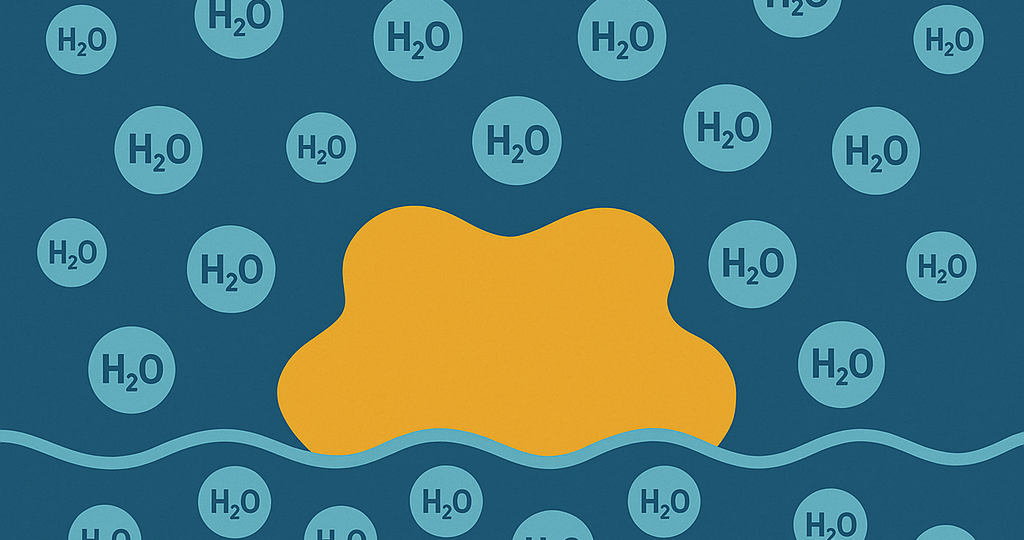
Sometimes, I write about things we don’t notice. Today, I’m going to explain the why of something that you notice on maybe even a daily basis. You’ve probably seen or know that no matter how hard you stir, oil and water just won’t mix. The oil floats stubbornly on top, forming little bubbles or slick layers, refusing to blend into the water. This everyday observation is due to something scientists call the hydrophobic effect — a quirky but fundamental force in chemistry and biology that explains why some molecules avoid water like it’s the plague.
The word “hydrophobic” literally means “water-fearing.” But it’s not fear in the emotional sense. It’s more about how non-polar molecules (like oils and fats) behave in polar environments (like water). Water molecules are polar — they have a positive and negative side, like tiny magnets. (however, don’t try to attract water with a magnet; that’s going to be an unproductive evening that you’ll never get back). They love to cling to each other using hydrogen bonds. But non-polar molecules don’t have charges, so they can’t form those bonds. When you pour oil into water, the water molecules would rather hang out with each other than deal with the oily intruders, which end up clumping together and getting pushed aside.
This effect doesn’t just happen in your kitchen — it’s actually one of the driving forces behind life itself. Cell membranes, for example, are made from lipid molecules with hydrophilic (water-loving) heads and hydrophobic tails. In water, these lipids spontaneously arrange themselves into a double layer, hiding their tails inside and leaving the heads outside — forming the basic barrier of all living cells. Without the hydrophobic effect, cell membranes couldn’t exist.
So the next time you see salad dressing separating into layers or oil bubbling in your soup, remember: it’s not just a kitchen nuisance — it’s a visible reminder of a deep scientific principle. The hydrophobic effect helps explain everything from why soap cleans your hands to how your body is structured at the molecular level.
RELATED POSTS
View all

